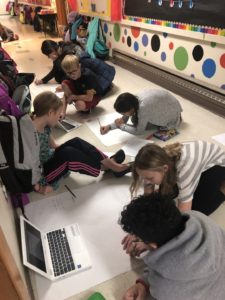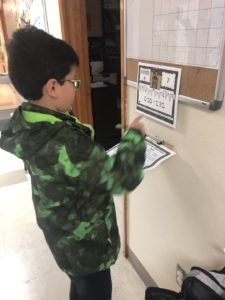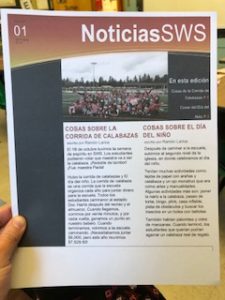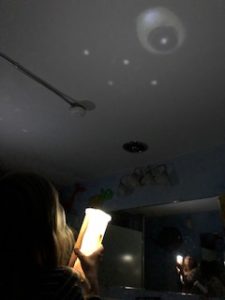History & Geography
 This week we continued working on the Age of Exploration. Our objectives were:
This week we continued working on the Age of Exploration. Our objectives were:
- continue compiling notes for our poster project
- check notes for accuracy

- design an informational poster about assigned chapter
- begin creating poster
Mathematics
This week we continued our chapter on Adding and Subtracting Fractions. Our objectives were:
- add and subtract mixed numbers
- apply skills from this chapter to complete word problems
- practice adding and subtracting mixed numbers by completing a scavenger hunt
- convert division expression to mixed numbers and decimals
Lectura
Dear families,
Please take the time to stop at our bulletin board and see our published magazines articles!
- Establish purposes, audiences and the need for different genres: Una critica de libros
- Apply reading comprehension skills and strategies (asking questions, clarifying, summarizing, compare and contrast information)
- Understand the spelling patterns of homophones. This week we reviewed homophones with and without h.
- Learn how to use relative pronouns in context (que, quien, quienes)
- Apply knowledge of the use of capitalization and proper punctuation.
- Compare and contrast two objects or ideas, in oral and written for. Demonstrate understanding of how to compare and contrast texts.
Ciencias
Focus questions: How and why did our ancestors look at the sky? What did they see? Why do stars appear to move across the sky?
This week we assessed our students understanding of the concept of gravity. After that, students were introduced to constellations as traditional stars patterns. They identified images in patterns of stars and give them names. Students simulated Earth’s rotation. While rotating, they observe the appearance of stars rising in the east, traveling across the sky, and setting in the west. Students observed a demonstration of the relationships and orientations of Earth, the Sun, and the Milky Way to explain why different stars are visible in different seasons. We read and informative piece titled ¨Stargazing¨ and watched watched a video that showed how star brightness, distance, and alignment converge to produce constellations. We concluded working on a fun constellation art project.
- Stars are at different distances from the Earth. Stars are different sizes and different brightness.
- Groups of stars form patterns and form constellations.
- Stars (constellations) appear to move together across the night sky because of earthś rotation.



